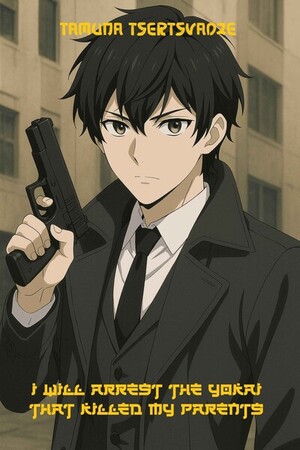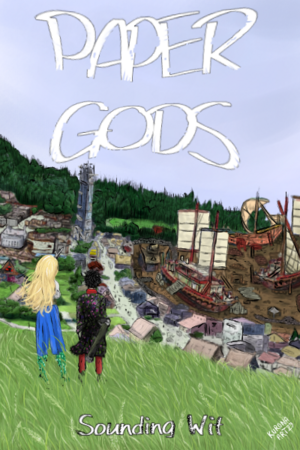Chapter 0:
What Lies Beyond the Veil
Demon Capital: Cursed Fates
Tokyo had a secret.
To those whose eyes were blessed by the Veil, the metropolis was a melting pot of many creatures and races. Superimposed over its banal urban machinery were traces of something supernatural and ancient. Ghosts, demons, and monsters walked and talked as naturally as any salaryman or pedestrian on the street. In this world, yokai lived among humans, and had been for quite some time.
From the humblest tsukumogami to the most complex ayakashi. All manner of animal-eared, tentacled, winged, and even ethereal monstrosity roamed the urban landscape.
No one really knows how or when the supernatural came into the world. Their genesis is veiled in time and secrecy. Meandering around the question offers little to no answers. Instead, yokai historians focus more on the modern historical record.
The Demon Capital is a term that refers to the center of the supernatural world, a focal location where the denizens of the night flock to in droves. It is known that each era has its own version of the Demon Capital. During ancient times, the Heian capital served as the focal point, eventually shifting to Nara and Kamakura during the Hojo Regency, and then finally to Tokyo during the Edo period. The origin of the term is unknown, but it has been passed down through generations of yokai and human lineages.
Supernatural society saw its rise and subsequent peak during the Heian period when the Fear of the Unknown was at its height. It was a time when the nights grew darkest, and the tumultuous hordes of the Night Parades stalked the lands of Yamato in a festival of fear and debauchery. It was a time when the currents of Fear subsumed all of creation in a tidal wave of horror.
The yokai of that era possessed tremendous powers that could rend reality itself. The most powerful could conjure plagues and calamities, destroy entire cities, or terrorize vast swathes of lands. Such horrors were only kept in check by the emperor’s personal league of court exorcists, and with great effort.
In modern times, the supernatural’s power has waned significantly. A yokai born after the Second World War could no longer tap into the vast reserves of destructive potential that yokai of antiquity could. Most of these modern yokai began to adapt to the city life, taking up human jobs and working human lives. Many of them took up dedicated human forms to blend in seamlessly with the populace. The rest found comfort in back alleys and shadowy corners, creating thriving communities under the nose of the city’s human denizens.
In matters of co-existence, those with power would often take advantage of those without. Co-existence, in essence, was not an easy feat, and interactions between the two worlds sometimes ended in violence or crime.
Peace was maintained by government-sanctioned investigators who worked under the Bureau of Supernatural Affairs, a branch of government that specialized in matters of the mystical. Among their ranks were human exorcists from prestigious bloodlines, various yokai from all walks of life, and half-breed sons and daughters of the supernatural and the mundane.
These investigators dealt with all manner of supernatural crimes, from the pettiest pickpockets to the most egregious mass murderers. This line of work was incredibly dangerous, and many investigators died early if they crashed a mission or failed to adapt to a threat.
Perhaps the most dangerous phenomenon they had to contend with was the emergence of the anomalous Cursed Spirits, mindless and ravenous entities dictated by hunger and a hatred of all living things. Most of these entities were mindless and harmless, however a good percentage of them were substantially more powerful than the average exorcist or yokai. As such, investigators were instructed to approach every case with great caution. Attempting to destroy or neutralize a Cursed Spirit alone was discouraged.
The Bureau kept a record and database of every Cursed Spirit they encountered, documenting new emergences and subspecies throughout the years. Even armed with this knowledge, the death toll of new investigators was still a record high. Such occupational hazards were only offset by the high salaries and prestigious employee benefits.
“Do good work, come home safe.”
Such was their slogan.
Many never did.




Please sign in to leave a comment.